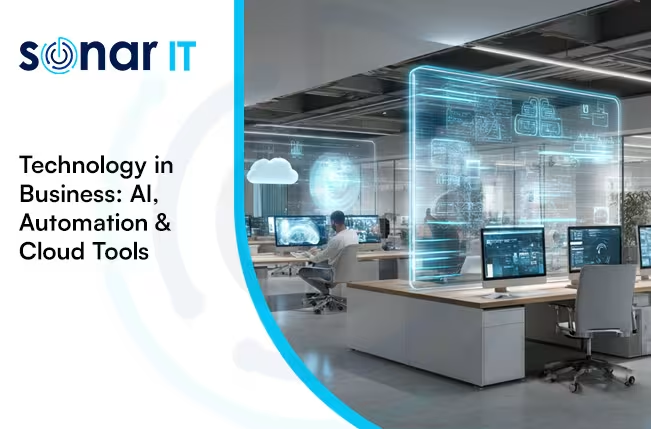Microsoft wants you to pay for updates
What’s Happening with Windows 10?
Microsoft has officially announced that support and free security updates for Windows 10 will end on 14th October 2025. From that point forward, businesses and users who choose to remain on Windows 10 will be required to pay for continued security updates through Microsoft's Extended Security Updates (ESU) program.
This marks a significant shift in how Microsoft manages legacy systems—and it could impact businesses of all sizes that haven’t yet migrated to Windows 11 or future versions like the anticipated Windows 12.
But what does this really mean? And what are your options?
Let’s break it down.
Why Is Microsoft Charging for Updates?
At first glance, the idea of paying for updates might sound unfair. After all, for years Microsoft provided ongoing support for its major operating systems at no extra cost. But let’s look at the context.
Windows 10 was first released in July 2015. By October 2025, it will have been in circulation for a full decade—a long run in the fast-evolving tech world. Since then, Windows 11 has become widely available, and rumours suggest Windows 12 is just around the corner.
Supporting multiple legacy systems becomes increasingly complex, costly, and resource-intensive. For Microsoft, continuing to offer free support for an operating system that is a decade old simply isn’t sustainable.
Instead, the company is encouraging users to move forward and adopt newer, more secure, and better-optimised operating systems.
Your Three Options Moving Forward
With the countdown to October 2025 ticking, businesses need to start planning their next steps. Microsoft is providing multiple options, but not all are equal in terms of security, compliance, and cost.
Option 1: Upgrade to Windows 11
This is Microsoft’s preferred (and recommended) option.
Upgrading to Windows 11 gives users access to:
- Regular free security and feature updates
- Improved performance and user interface
- Advanced cyber security features
- Better compatibility with modern hardware and software
- Ongoing support through the rest of the decade
For businesses, upgrading to Windows 11 is the most future-proof solution. While it might require investment in new devices or training for your team, it ensures your systems stay protected and up to date.
If you're using relatively modern hardware (especially machines bought from 2020 onwards), you may already be eligible for a free upgrade.
Option 2: Stick with Windows 10… and Pay
If upgrading right away isn’t feasible for your organisation, you can opt to remain on Windows 10—but at a cost.
Microsoft will offer Extended Security Updates (ESU) for a fee, much like it did with Windows 7. These are:
- Security-only updates (no feature enhancements)
- Likely offered via annual or monthly subscription
- Meant as a temporary measure, not a long-term solution
At the time of writing, Microsoft hasn’t released exact pricing details. But historically, these ESU programmes can cost hundreds per device annually and increase in price each year.
This option is best suited for businesses with legacy software dependencies that prevent an immediate upgrade but need time to plan their transition.
Option 3: Stay on Windows 10 Without Updates
Technically, yes—you can continue using Windows 10 for free after October 2025.
But we strongly advise against it.
Here’s why:
- You’ll no longer receive critical security patches, leaving your systems wide open to cyber threats.
- Any data breach or malware attack on an unsupported system could result in serious legal, financial, and reputational damage.
- Without support, even IT professionals will struggle to troubleshoot issues, making downtime more likely and costly.
In short, this option is not viable for any organisation that takes IT security seriously.
What Does This Mean for Your Business?
The end of free Windows 10 updates has wide-reaching implications, especially for small and medium-sized businesses (SMBs) still relying on older systems.
Here’s what you need to consider:
- Cyber Security Compliance: Many industries now require systems to be patched and supported. Running outdated software could breach compliance frameworks like Cyber Essentials, ISO 27001, or GDPR.
- Insurance Risk: Cyber insurers are tightening their policies. Running unsupported OS versions may void your coverage.
- IT Management Costs: Keeping Windows 10 past its end-of-life will likely increase support costs as issues become harder to fix and more frequent.
- Hardware and Software Compatibility: As vendors align with newer OS versions, older systems may lose compatibility with core applications or drivers.
Planning Ahead: What Should You Do Now?
2025 might seem far away, but in IT planning terms—it’s not. Transitioning your entire network takes time, strategy, and testing.
Here’s a recommended approach:
- Audit Your Current Devices
Identify all Windows 10 machines in your business. Check whether they meet the minimum requirements for Windows 11. - Evaluate Legacy Software
Any bespoke or industry-specific tools may need compatibility testing with Windows 11 or alternatives found. - Budget and Plan for Upgrades
Factor in the cost of new devices if required. Consider leasing options or trade-in programmes. - Create a Timeline
Don’t leave migration to the last minute. Stagger upgrades over the next 12–18 months to minimise disruption. - Train Your Team
Help staff transition with minimal friction by offering onboarding for Windows 11 features and new workflows. - Speak to Your IT Provider
A trusted IT partner can help audit your setup, recommend upgrade paths, manage data migration, and ensure minimal downtime.
Still on Windows 10? Let’s Talk.
At Sonar IT, we help businesses across Essex and London navigate the digital shifts that matter. Whether you're:
- Unsure if your hardware is compatible with Windows 11
- Concerned about software compatibility
- Looking for the smoothest, most secure transition plan
We’re here to help. From consultation to deployment, our expert team ensures that your move from Windows 10 is safe, seamless, and tailored to your business needs.
Don’t wait until 2025 catches you off guard.
Final Thoughts
The end of Windows 10 support marks the close of a chapter—but it’s also an opportunity. By embracing newer systems, businesses can enhance security, productivity, and future readiness.
Start planning today. And if you need help, reach out to our team—we’re always happy to guide you through it.
.svg)






